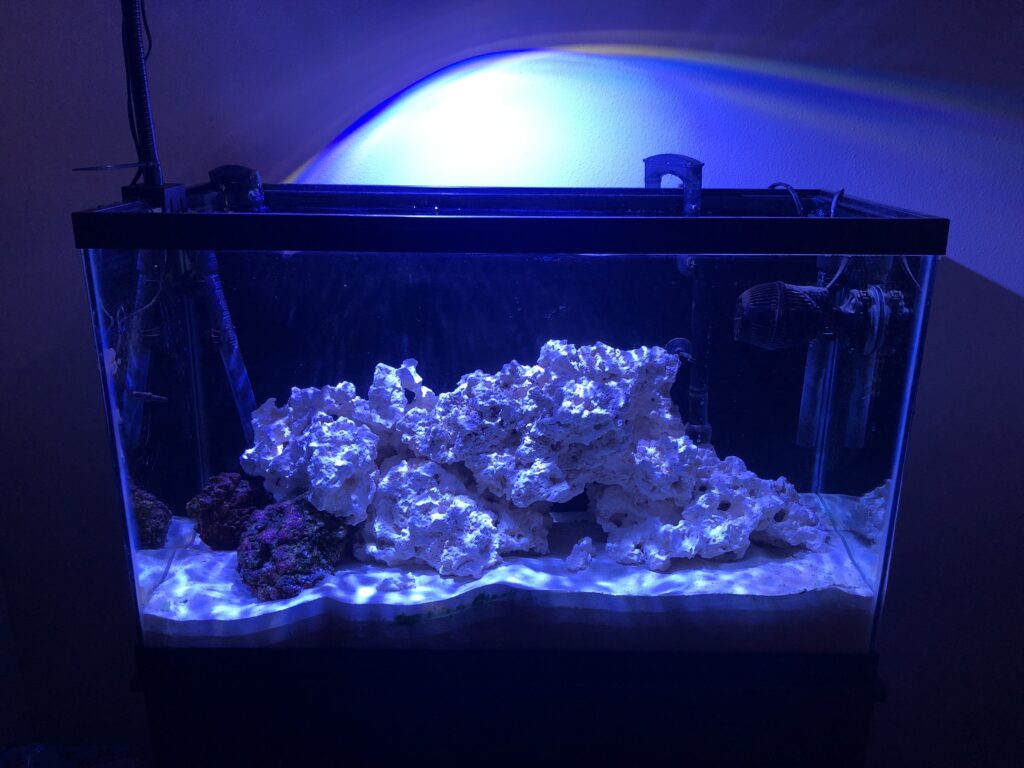
What Even is This?
So you want to get into aquariums? Well, then you’ve certainly come to a place! I’ve only been in the hobby for a year, but I’ve learned a lot and hope to pass that knowledge on. Many of the places I learned about keeping an aquarium focused on intense technical details. This can be overwhelming if you’re just starting out! Here, I hope to distill all of that into practical knowledge, and only as much information as you need to be successful. I will also be including more technical details in collapsed sections if you want to learn more of the “why” things work the way they do.

My Tank History
Like I said, I’ve only been in the hobby for a year, but I’ve had two different tanks in that time. I started out with a 30 gallon (due to apartment restrictions), but ended up moving to a new place with no restrictions. This gave me the opportunity to upgrade the tank to 75 gallons. The move was exciting for its own reasons, which I’ll go into detail about in a separate post, but the outcome was no loss, and only some confused fish. I’ve had to deal with many common problems in this time period, such as; red slime (cyanobacteria), green hair algae (common nuisance algae), red bubble (a more frustrating nuisance algae), aiptasia (a very common nuisance hydra), flukes (a common external infection), internal parasites, a move, many tank upgrades, and one fish death (and an important lesson learned).

My Personal Aquarium History
Note: All the details, terms, and whatnot will be explained in future posts. Don’t worry if you don’t understand some of this!
I went into this knowing nothing about keeping an aquarium, salt or freshwater, starting in October 2019. I’d never really read anything about it and the only reason I did it was a love of the ocean since childhood. This quickly turned into a passion, and in mid-November 2019 I started getting the supplies I’d need to get started. By December I’d added water and was beginning to cycle the tank. The first creatures were added in mid-February, selected for their hardiness.

I’ve endeavored to keep all my critters as happy as possible. This has included making sure that the water chemistry won’t cause stress, creating a comfortable and safe-feeling environment, and making sure that all my inhabitants would get along. I also really wanted to create a self-sustaining ecosystem. Not out of laziness, but just because I felt that it was the purest expression of what I wanted to capture.
This resulted in me creating what is commonly known as a “reef tank”. It has a deeper sand bed, many species of coral, fish that have been selected for their coral compatibility, a significant amount of rock, high biodiversity, and macro-algae. If you want to jump in with both feet (metaphorically), this is the way to go.

